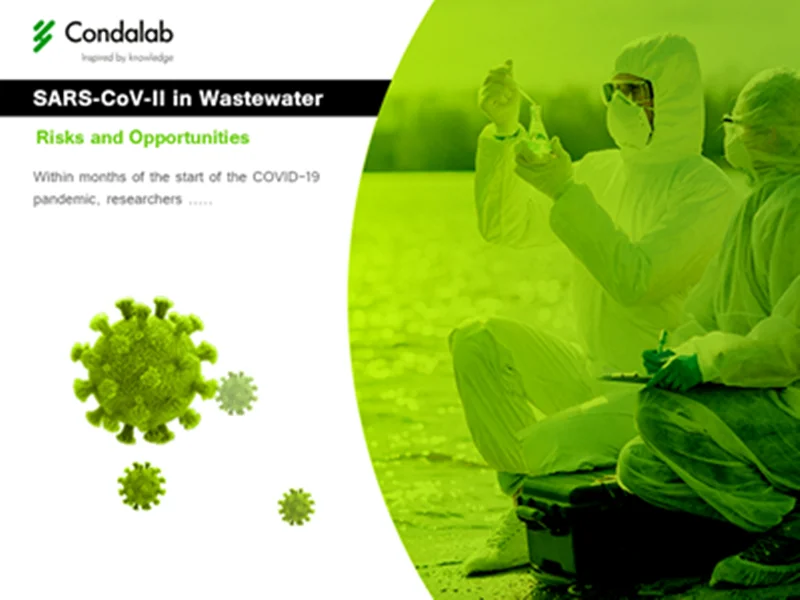Presence of SARS-CoV-2 in wastewater: risks and opportunities
Published: 28/07/20 13:11 Categories: Microbiology
Since the start of the COVID-19 pandemic, a few months ago, researchers have gathered more information to prevent new outbreaks or infections. The main routes and vehicles of transmission have been widely discussed, and up until now it has been maintained that food is not included among these vehicles. But what about wastewater?
The symptomatology of the disease caused by the virus has evolved throughout these months. In addition to the few symptoms identified in the beginning, we now know that there are multiple manifestations of the disease, such as rashes or loss of the sense of smell or taste.
Diarrhea is one of the symptoms that is causing alarm, after traces of the virus were found in samples collected from patients infected worldwide, since this microorganism is capable of infecting the intestinal epithelium. Because SARS-CoV-2 can be excreted in both symptomatic and asymptomatic carriers, the scientific community began testing wastewater to evaluate whether SARS-CoV-2 can be detected, which has been confirmed.
So, is there a risk of infection through wastewater?
Wastewater treatment is very extensive, and so controlled, that even in some areas, reusing treated water is a common practice due to all of its benefits. Such treatments are able to inactivate this new virus and provide protection. However, scientists have reported the presence of the virus in countries like the Netherlands, Italy or Australia.
Nevertheless, it is important to mention that there might be a small risk, as coronaviruses may remain infectious for some days in wastewater, which can constitute a potential vehicle through droplet aerosolization, for example, in shower heads, which is an unlikely possibility. It is believed that this is an infection route for Legionella pneumophila in homes. However, to this day, no evidence has been found supporting the viability of the virus in wastewater systems.
If there is no risk, why is wastewater analysis relevant for the pandemic?
The presence of this genetic material is not currently considered a risk factor for the transmission of the virus, due to the low prevalence at specific points of any WWTP and the inactivation and instability of the virus. This research has provided a quick, dynamic and, above all, extensive tool for environmental monitoring. Thus, it has become a novel alert system which allows controlling the circulation of the virus among populations, even before symptoms appear.
Furthermore, it should be remembered that this is not the first instance in which the development of a disease is followed through environmental monitoring; such is the case of the poliovirus.
Due to the long time from infection to the first symptoms, wastewater analysis is not deemed as a diagnostic test but as an indicator to consider. Since it is complicated to perform mass clinical tests, wastewater analysis may provide information about the level of infection within a population.
Regularized wastewater monitoring could provide authorities with critical information on the prevalence of the disease. This would save valuable time and enable fast and crucial decision-making in the event of a new outbreak.
Although there are still no standard methods for the environmental monitoring of SARS-CoV-2, at Condalab we provide our Virus Transport Medium (VTM), a medium of transport to carry out the virus sample collection. For more information, please visit our website.


دیدگاه خود را بنویسید